International Disaster Volunteering Over 50
Senior Volunteers are Making a Huge Difference
Article and photos by John Dwyer
Contributing
Editor on Senior Volunteer Service
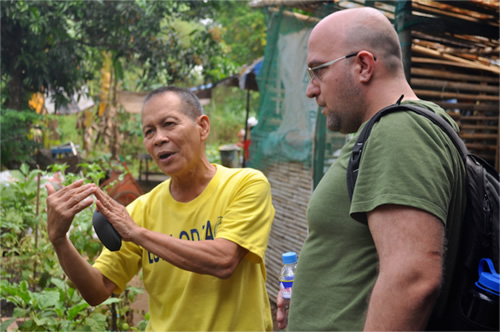
|
|
Buklod Tao founder and European Disaster Volunteers (EDV) Executive Director in Phillipines.
|
Each day seems to bring new disaster to the world. China, India, Haiti, the Philippines, Somalia, and the U.S.A. are a few of many countries that have recently experienced disasters. No matter the cause whether it natural, economic, armed conflict, or a combination of the three, people, communities and countries are affected and request assistance. We, as over 50 international volunteers, can help.
Locally based organizations or groups are usually the first responders to disasters: fire, police, military, and medical units are immediately on the scene. Community members and survivors join them. Depending upon the severity of the event, international rescue teams may also be involved. As the early post-event hours and days pass, the injured are rescued and cared for, damage is assessed, and needs are determined. It is after this initial response period that international volunteer organizations begin their work.
From the physical work of mucking-out flooded and damaged houses; to building or rebuilding structures; to teaching computer, marketing, and mitigation techniques; to giving medical aid and training, there are many opportunities for volunteers to contribute to disaster recovery efforts.
International Volunteer Organizations
I contacted six organizations while researching this article:
-
All Hands Volunteers
-
European Disaster Volunteers (EDV)
-
FAVACA
-
Fuller
-
Habitat for Humanity
-
Volunteers for Peace (VFP)
Although I did not contact United Nations Volunteers (UNV) about their disaster response programs, I have volunteered with them in the past, am aware of their operations, and so have included them in this article.
Volunteer organizations differ in their approach to disaster response work, and to the type of volunteers they recruit. All Hands concentrates on manual debris clearance although, as Jessica Thompson, Volunteer Coordinator for All Hands explained, “We often also offer additional programs based on the needs in the particular community. Thompson added, “You will be doing a lot of physical work and projects are often located in warmer climates so a reasonable level of fitness is a real help.”
Emma Taylor, European Disaster Volunteers (EDV) Media and Marketing Director said, “Our projects range from construction work to holding IT training. In an “average” week a volunteer could support (or run!) a team building workshop for youth activists, move rocks into erosion control structures, help research market opportunities for locally produced recycled products, and jump in mixing concrete on the construction site!”
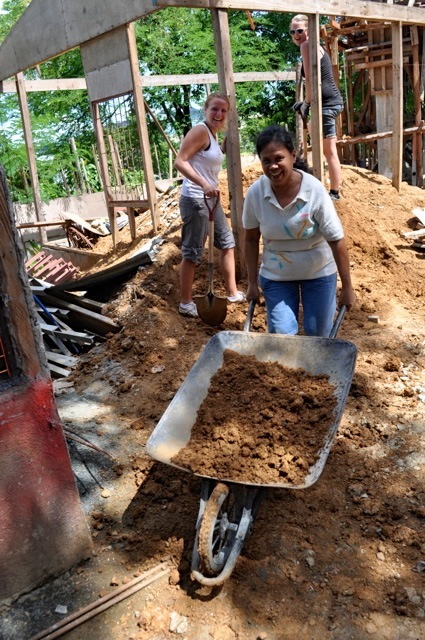
|
|
European Disaster Volunteers and Buklod Tao volunteers working together on a project in the Philippines.
|
Chelsea Frazee of Volunteers for Peace (VFP) Alumni and Outreach said that activities involving, “Cleaning debris, rebuilding schools and homes, assisting in emergency shelters including working with kids, cleaning, cooking, etc.” are among the types of work that volunteers with VFP often perform.
FAVACA has more specific volunteer needs. “FAVACA disaster assistance volunteers are typically experts in the disaster field,” according to Rebecca Reichert, Director of Development for FAVACA. “Their work may include training partners in small business development, disaster mitigation, organizational development, women or youth leadership, health care and education among many other topics.”
The time a volunteer needs to commit to a deployment can range from one week to months depending upon the organization, the disaster, and the time the volunteer has available. A volunteer should be in reasonably good health. It is important prior to committing to any international mission that a volunteer be aware of their health condition and physical limitations. A visit to one’s family physician prior to deployment is advisable. Emma Taylor of EDV said, “Volunteers must be healthy enough to safely stay with us in the developing world, but there are very few medical conditions that will immediately exclude a volunteer.”
All of the organizations expressed the need for volunteers to be flexible and adaptable. “Don’t expect everything to be perfectly planned or executed, said Chelsea Frazee of VFP, “but do expect you will meet new people, learn a lot about yourself and have an impact on the community you are working in.”
To find a program that will work for you, visit the websites of the international volunteer organizations. First go to the Frequently Asked Questions pages for basic information. Check out the types of programs offered, transportation arrangements, insurance costs, and how the organization lodges its volunteers. Find out about security arrangements. Then contact the organizations either by email or telephone. Request contact information of former volunteers so you can ask them about their experiences. Ask about any clothing and equipment that you should take with you on the mission. Ask any other questions that are important to you. Once you have gathered the information you can make an informed choice and plan your mission.
For More Info
on Senior Volunteer Organizations
Listed below are resources, including website links, about the organizations mentioned in this article:
All
Hands and Hearts Volunteers
A non-profit organization that addresses the immediate and long-term needs of communities impacted by natural disasters by engaging and leveraging volunteers, partner organizations and local communities. They aim to demonstrate the power and value of volunteerism through the tangible work done, the hope it brings to suffering communities, and the transformative experiences it provides for volunteers.
Dedicated to connecting those who need help with those who want to help, in the past few years All Hands has mobilized over 51,000+ volunteers from 18 different countries on 98 disaster response and rebuild projects in 18 countries around the world. With the time given by those volunteers and the support of generous donors, critical assistance has been provided to tens of thousands of families. All Hands invites volunteers to help provide effective and timely disaster response and relief.
The Fuller Center for Housing
The Fuller Center for Housing, faith-driven and Christ-centered, promotes collaborative, innovative partnerships with individuals and organizations in an unrelenting quest to provide adequate shelter for all people in need worldwide.
The Global Builders program is a critical part of the Fuller Center's mission and success. By bringing together people of different backgrounds, faiths and cultures, it is not just a chance to build houses, but also to build friendships, understanding and raise awareness.
No skill levels are needed to volunteer, just a willing heart to serve. Join or help organize a team today.
Habitat for Humanity
Habitat for Humanity International is an ecumenical Christian ministry that is working in partnership with low-income families around the world to build simple, decent housing.
Through the work of Habitat, thousands of low-income families have found new hope in the form of affordable housing. Churches, community groups, and others have joined to tackle a significant social problem successfully — decent housing for all.
Today, Habitat has helped build or repair more than 800,000 houses and served more than 4 million people around the world.
Volunteer internationally to build decent, affordable shelter alongside members of the community. Learn about poverty housing, development challenges and Habitat’s ministry and mission to help eradicate them. The funds you raise help build decent shelter in the country you visit and support the Global Village program. For more information, visit the website
United Nations Volunteers
Created in 1970 by the UN General Assembly, the United Nations Volunteers(UNV) program mobilizes qualified volunteers to serve in countries throughout the world. Based in Bonn, Germany, UNV is active in around 130 countries every year. UNV, with Field Units in 86 countries, is represented worldwide through the offices of the United Nations Development Programme (UNDP). For further information and an application, please visit the website.
Volunteers for Peace
Volunteers for Peace offers placements within international volunteer projects in countries worldwide. Projects have involved over 30,000 volunteers to date, including the United States. As part of the international voluntary service movement Volunteers for Peace participants work with volunteers from other countries on grassroots-identified projects to enhance local communities. This unique approach to international volunteering provides intercultural education in a service learning environment. The sharing of everyday life, both with the local community and among the international volunteers, is an integral part of the learning and serving experience. Most of the volunteer projects last 2-3 weeks, however there are a selection of medium- and long-term placements. Participants can volunteer with kids, teach English, restore the environment, or assist with social projects such as HIV/AIDS awareness.
|
Senior Disaster Volunteers at Work
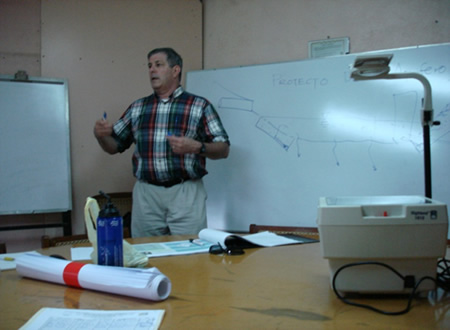
|
|
Sal Arnaldo conducting training workshops for preventing waterborne diseases in Nicaraguan communities.
|
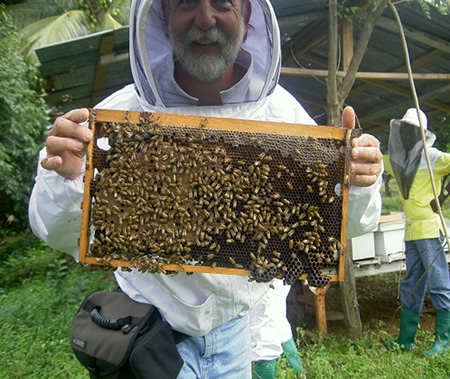
|
|
Building on the integrated pest and disease management training, Bo Sterk endeavored to encourage beekeepers that had lost colonies to reestablish apiaries once a supply of healthy bees could be procured
|
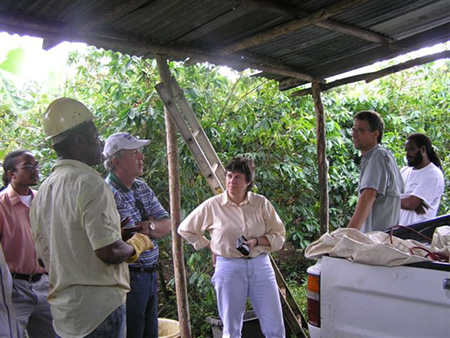
|
|
Tom Spreen and Renee Goodrich assessed the potential for the construction of a new citrus/fruit processing plant, analyzed the potential processing capacity, helped to determine the energy needs to become self-reliant, and gauged the viability of establishing a plant
|
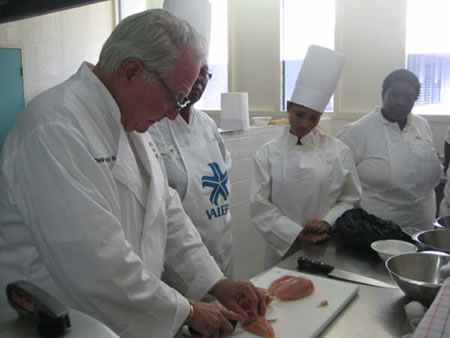
|
|
Dr. West traveled to Oranjestad, St. Eustatius from December 5-13, 2008 to conduct training sessions on proper kitchen safety, sanitation, and a variety of cooking skills. A total of 40 students, local chefs, and teachers from the Tourism Center benefited from the training.
|
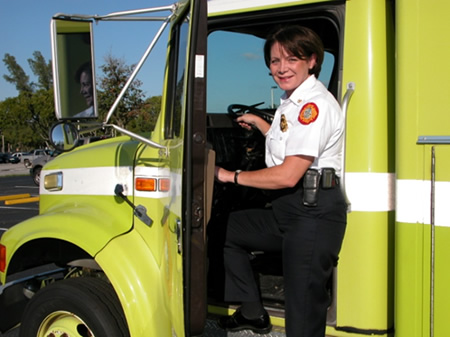
|
|
Maria Figueroa Rodriguez returned to Guatemala City, Guatemala, September 16-19, 2002, to provide training under the US Southern Command’s Humanitarian Assistance Program.
|
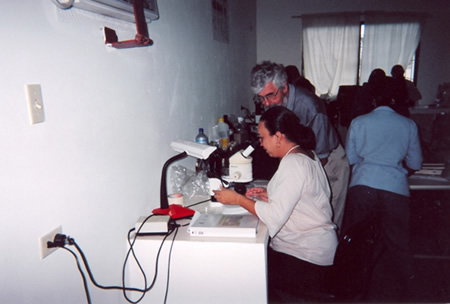
|
|
Dale Habeck, PhD, Gainesville, conducted the training September 13-21, 2003. Officers lacked proper skills in identification of these pests, which is vital for proper management strategies. The training upgraded the skills of the department staff and plant quarantine officers, while allowing them to perform their tasks more efficiently.
|
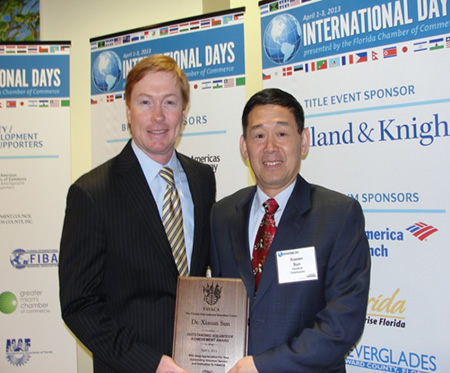
|
|
Dr. Xiaoan Sun, Plant Pathologist with the Florida Department of Agriculture and Consumer Services — Division of Plant Industry also in Gainesville, Florida
|
|
John Dwyer, Contributing
Editor on Senior Volunteer Service for TransitionsAbroad.com, joined the Peace Corps at age 56, a decision that has led to
international service in 14 countries and travel to 54 countries.
After Peace Corps service in Guatemala, John served as a United
Nations volunteer in the first elections in Bosnia and Herzegovina
after the Bosnian War. He has subsequently worked on elections
in 10 other countries. He managed camps for internally displaced
persons (IDPs) in Herat, Afghanistan and did development work
in Kandahar, Afghanistan. He continues to work internationally.
John hosts a website, Over 50 and Overseas, which is a resource for individuals over 50 who wish to volunteer internationally.
|
